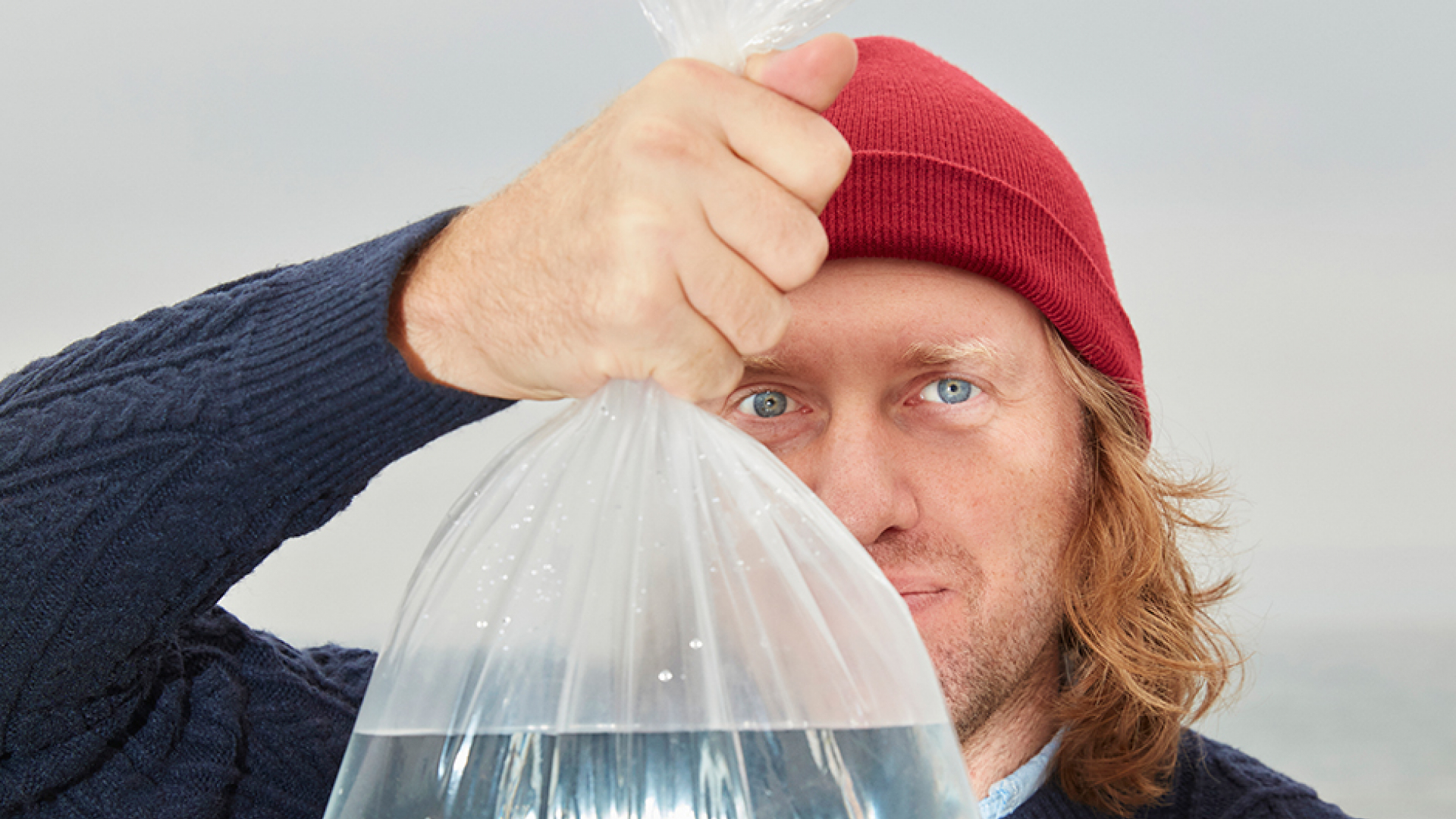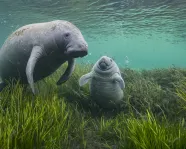Bio
B. Sc., majeur en biologie (option biologie de la conservation), mineur en science politique, Université de la Colombie-Britannique, 2005
M. Sc., biologie, Université du Québec à Montréal, 2010
Ph. D., limnologie (mention honorifique), Université de Potsdam, 2013
Soren Brothers est conservateur Allan en Helaine Shiff en changement climatique au ROM et professeur adjoint au Département d’écologie et de biologie évolutive à l’Université de Toronto. Ses recherches portent sur les effets du changement climatique sur les lacs et sur l’influence des changements des systèmes aquatiques sur leurs émissions de gaz de serre. Il s’intéresse à la manière dont les boucles de rétroaction et l’étude transdisciplinaire des lacs peuvent nous aider à comprendre et à prévoir les points de bascule planétaire susceptibles d’accélérer les changements climatiques anthropiques.
Soren Brothers est né à Mississauga et a grandi à Toronto. Il a étudié divers milieux lacustres à travers le monde, y compris la toundra au Nunavut, les forêts boréales au Québec et les Grands Lacs. La communication scientifique et la mobilisation communautaire lui tiennent à cœur. Avant de se joindre au ROM en 2021, il était professeur adjoint de limnologie à l’Université d’État de l’Utah. Il a également été gestionnaire de programme CREATE et stagiaire postdoctorant à l’Université de Guelph, où il étudiait les multiples agents stressants et les effets cumulatifs dans les Grands Lacs.
Site web du groupe de recherche : sorenbrothers.weebly.com
Publications scientifiques (consulter Google Scholar pour la liste à jour)
- 2021Vadeboncoeur, Y., S. Brothers, et al., 2021. Blue waters, green bottoms: filamentous algae blooms (FABs) are an emerging threat to clear lakes worldwide. BioScience, 71:1011-1027.External link, opens in a new tab
- 2021Brothers, S. and Y. Vadeboncoeur, 2021. Shoring up the foundations of production to respiration ratios in lakes. Limnology and Oceanography. 66:2762-2778. Doi: 10.1002/lno.11787
- 2021Kazanjian, G., S. Brothers*, J. Köhler, and S. Hilt, 2021. Incomplete recovery of a shallow lake to a brownification event. Freshwater Biology, 66:1089-1100.External link, opens in a new tab
- 2021Brothers, S., D. Bowes, W.D. Pearse, S. Tank, R. Vanengen, and P. Sibley, 2021. Declining summertime pCO2 in tundra lakes in a granitic landscape. Global Biogeochemical Cycles, 35.2. doi:10.1029/2020GB006850
- 2020Clancy, N., J. Draper, J.M. Wolf, U.A. Abdulwahab, M. Pendleton, S. Brothers, J. Brahney, J. Weathered, E. Hammill, T.B. Atwood, 2020. Protecting endangered species in the USA requires both public and private land conservation. Scientific Reports, 10:11925
- 2020Keller, P.S., S. Brothers, et al. 2020. Global CO2 emissions from dry inland waters share common drivers across ecosystems. Nature Communications.External link, opens in a new tab
- 2018Epperly, J., A. Witt, J. Haight, S. Washko, T. B. Atwood, J. Brahney, S. Brothers, and E. Hammill, 2018. Relationships between borders, management agencies, and the likelihood of impairment. PLOS One, 13:e0204149
- 2018Brothers, S. and P. Sibley, 2018. Light may have triggered a period of net heterotrophy in Lake Superior. Limnology and Oceanography, 63:1785-1798. doi:10.1002/lno.10808
- 2018Mehner, T., B. Lischke, K. Scharnweber, K. Attermeyer, S. Brothers, U. Gaedke, S. Hilt, and S. Brucet, 2018. Empirical correspondence between trophic transfer efficiency in freshwater food webs and the slope of their size spectra. Ecology, 99:1463-1472.
- 2017Hilt, S., S. Brothers, E. Jeppesen, A. Veraart, and S. Kosten, 2017. Translating regime shifts in shallow lakes into changes in ecosystem function. BioScience, 67:928-936.
- 2017Lischke, B., T. Mehner, S. Hilt, K. Attermeyer, M. Brauns, S. Brothers, H.-P. Grossart, J. Köhler, K. Scharnweber, and U. Gaedke, 2017. Benthic carbon is inefficiently transferred in the food webs of two eutrophic shallow lakes. Freshwater Biology doi: 10.1111/fwb.12979
- 2017Brothers, S., Y. Vadeboncoeur, and P. Sibley, 2017. A decline in benthic algal production may explain recent hypoxic events in Lake Erie’s central basin. Journal of Great Lakes Research. 43: 73-78.
- 2017Brothers, S., G. Kazanjian, J. Köhler, U. Scharfenberger, and S. Hilt, 2017. Convective mixing and high littoral primary production can establish systematic errors in lake diel oxygen curves in shallow, eutrophic lakes. Limnology and Oceanography: Methods. doi: 10.1002/lom3.10169
- 2016Brothers, S., Y. Vadeboncoeur, and P. Sibley, 2016. Benthic algae compensate for phytoplankton losses in large aquatic ecosystems. Global Change Biology. doi:10.1111/gcb.13306
- 2016Mehner, T., K. Attermeyer, M. Brauns, S. Brothers, J. Diekmann, U. Gaedke, H. Grossart, J. Köhler, B. Lischke, N. Meyer, K. Scharnweber, J. Syväranta, M. Vanni, and S. Hilt, 2016. Weak response of animal allochthony and production to enhanced supply of terrestrial leaf litter in nutrient-rich lakes. Ecosystems doi: 10.1007/s10021-015-9933-2
- 2015Hilt, S., T. Wanke, K. Scharnweber, M. Brauns, J. Syväranta, S. Brothers, U. Gaedke, J. Köhler, B. Lischke, and T. Mehner, 2015. Contrasting response of two shallow lakes to a partial winterkill of fish. Hydrobiologia, doi: 10.1007/s10750-014-2143-7
- 2014Brothers, S., J. Köhler, K. Attermeyer, H.P. Grossart, T. Mehner, N. Meyer, K. Scharnweber, and S. Hilt, 2014. A feedback loop links brownification to anoxia in a temperate, shallow lake. Limnology and Oceanography, 59(4): 1388-1398.
- 2014Scharnweber, K., J. Syväranta, S. Hilt, M. Brauns, M.J. Vanni, S. Brothers, J. Köhler, J. Knežević-Jarić, and T. Mehner, 2014. Whole-lake experiments trace added terrestrial particulate organic carbon in benthic food webs of shallow lakes. Ecology, 95:1496-1505. http://dx.doi.org/10.1890/13-0390.1
- 2013Brothers, S., S. Hilt, K. Attermeyer, H.P. Grossart, S. Kosten, B. Lischke, T. Mehner, N. Meyer, K. Scharnweber, and J. Köhler, 2013. A regime shift from macrophyte to phytoplankton dominance enhances carbon burial in a shallow, eutrophic lake. Ecosphere, 4: art137. dx.doi.org/10.1890/ES13-00247.1
- 2013Brothers, S., S. Hilt, S. Meyer, and J. Köhler, 2013. Plant community structure determines primary productivity in shallow, eutrophic lakes. Freshwater Biology, 58: 2264-2276. doi:10.1111/fwb.12207
- 2012Brothers, S., P.A. del Giorgio, C.R. Teodoru, and Y.T. Prairie, 2012. Landscape heterogeneity influences carbon dioxide production in a young boreal reservoir. Canadian Journal of Fisheries and Aquatic Sciences, 69: 447-456.
- 2012Brothers, S., Y.T. Prairie, and P.A. del Giorgio, 2012. Benthic and pelagic sources of carbon dioxide in boreal lakes and a young reservoir (Eastmain-1) in eastern Canada. Global Biogeochemical Cycles, 26. doi:10.1029/2011GB004074.
- 2008Brothers, S., J. Vermaire, and I. Gregory-Eaves, 2008. Empirical models for describing recent sedimentation rates in lakes distributed across broad spatial scales. Journal of Paleolimnology, 40(4): 1003-1019.

